“Country of Rivers: A Life’s Work”
If you ask Al Buck about his life and work, he unfolds a map of the Lower Forty-Eight with a sidebar for Alaska. Marked on it are over 11,000 miles of protected rivers. Blue eyes bright in his thin face, he points out stretches of water he knows, naming them quietly. The Wolf River in Wisconsin. The Delaware and the Snake. Oregon’s Rogue, where he and his son took a fine steelhead trip a few years back.
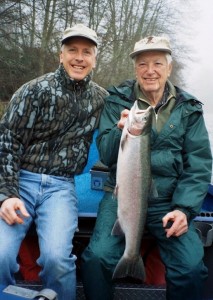
Here, this is my life, he seems to be saying, these places.
The passion has been in him so long, he can’t remember what kindled it. Maybe it goes back to his first boyhood fishing expeditions in the early 1920s. He’d tie a length of string to the end of a willow pole and set out to dunk worms and crickets in the little brook that ran near the family farm in central Pennsylvania, hoping for suckers and the occasional trout. Maybe it began when he got his first shotgun—a 16-gauge single-shot—and started hunting rabbit and pheasant with his older brother, Bob. Or maybe it was the ten-day lake-hopping trip he and Bob took when Al was in high school, navigating through Ontario’s Algonquin Park in the canvas-covered duck boat they’d built in the cellar.
Whatever it was, something sparked his ruling passions: to protect natural places and to provide opportunities for public outdoor recreation.
In 1949, when he and his hometown sweetheart relocated from Pittsburgh to Washington, DC, he didn’t just see the city. He saw the river, too. “I started bass fishing the Potomac as soon as Helen and I arrived,” he recalls.
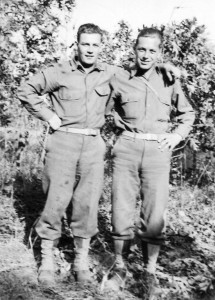
With four years of Army experience—the final ten months with the 227th Field Artillery Battalion, fighting from Omaha Beach to the Elbe River in Germany—and a degree in geography earned on the G.I. Bill, the job Al had taken with the Army Map Service in DC was a logical fit. So was the one he later switched to with Air Force and Navy Intelligence.
But before long, his underlying passions—their seeds planted who knows when—began to stir. He started taking night classes at the University of Maryland. Two years later, in 1955, his research project was complete: a study of the outdoor recreation potential of the Potomac River Basin.
“Thesis in hand, I went to the National Park Service,” says Al. “Bingo! They were hiring.”
For several years, Al devoted himself to designing recreation areas for reservoirs built by the Bureau of Reclamation and the Army Corps of Engineers. His superiors took note of his dedication and, in 1962, tapped him to help launch the new federal Bureau of Outdoor Recreation. It was there at the BOR that Al’s career took its final, decisive turn.
He recalls a field trip to the Middle Delaware, where the Corps of Engineers was planning to build the 37-mile-long Tocks Island Reservoir. Though he was in charge of reservoir planning at the BOR, he returned from that trip and said to a colleague, “Let’s see if we can scuttle the project.”
He knew it would be a tough fight. The Corps had already acquired tens of thousands of acres for the project. And back then, he says, “The attitude was ‘What the Corps wanted, the Corps got.’”
Al set himself the task of convincing his superiors, members of Congress, and then-Secretary of the Interior Stewart Udall that the Delaware should be left free-flowing. He wasn’t alone. The modern conservation movement was gaining momentum and opponents of the dam were coming together. The Tocks Island fight, as Udall noted in his foreword to Richard Albert’s Damming the Delaware, “coincided with a turning point in our nation’s outlook toward its resources.” After years of pitched battle, the project was halted just days before the ground-breaking ceremony. The Delaware Water Gap National Recreation Area was born.
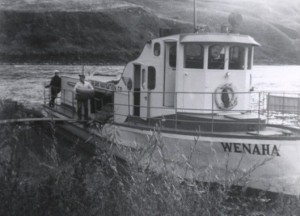
“We got our jewel,” Al Buck recalls. His river work had begun.
After several years helping establish the Land and Water Conservation Fund—a program that would go on to create new recreation opportunities in almost every county of every state in the nation, over 40,000 projects in all—he was asked to help launch the Wild and Scenic Rivers program. He would spend the final and most satisfying decade of his career there, protecting the first of those 11,000-plus miles of water he now points to so fondly.
Al remembers one of the first stretches of water he tried to protect: “Pennsylvania’s Grand Canyon.” Floating through that section of Pine Creek one autumn, he and his team were impressed by its rugged beauty and they recommended it as a potential Wild and Scenic River. But agencies protested. Residents argued. Decisions were shelved again and again. And when Pine Creek finally received protection many years later, it came not from the national program, but from the state. Which way it happened didn’t much matter to Al, as long as the job got done.
“‘Keep focused, keep it simple’ was my motto,” he says.
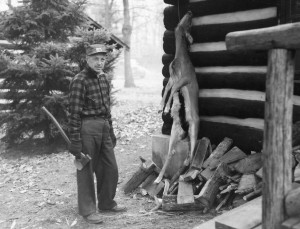
When he wasn’t working to protect places and create outdoor recreation opportunities, he was out there enjoying those places himself. He often took his sons along, passing his love of the outdoors on to them. He fished whenever he could. And during the first week of Pennsylvania’s firearms season each fall, he and his brothers would rent a cabin in Black Moshannon State Park and hunt deer in the adjoining State Forest.
Today, more than thirty years after retiring and moving to the West Coast, Al Buck’s passion for conservation hasn’t diminished. Mindful of his roots, he has helped the Central Pennsylvania Conservancy and the Pennsylvania Game Commission purchase critical wildlife habitat. And, with the Southern Oregon Land Conservancy, he still devotes much of his time to volunteering on conservation’s front lines.
Al’s boyish enthusiasm for the outdoors hasn’t dimmed either. Now in his 90s, he needs a pair of trekking poles to navigate rough ground. But he and Jim still hike into the woods for a few days each fall. Al finds the weathered trunk of a fallen tree and sits down to wait, deer rifle close at hand.
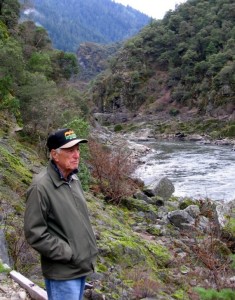
Nearly nine decades after his first willow-pole outings, he still heads to the water every chance he gets. A couple years ago, his big find was a new hotspot for trout. Fisherman’s Heaven, he calls it. He and his Chevy pickup can get there in just over half an hour.
© 2010 Tovar Cerulli
At the age of 93, Alfred Buck was named a Hero of Conservation by Field & Stream (March 2010). Tovar Cerulli is his grand-nephew.
